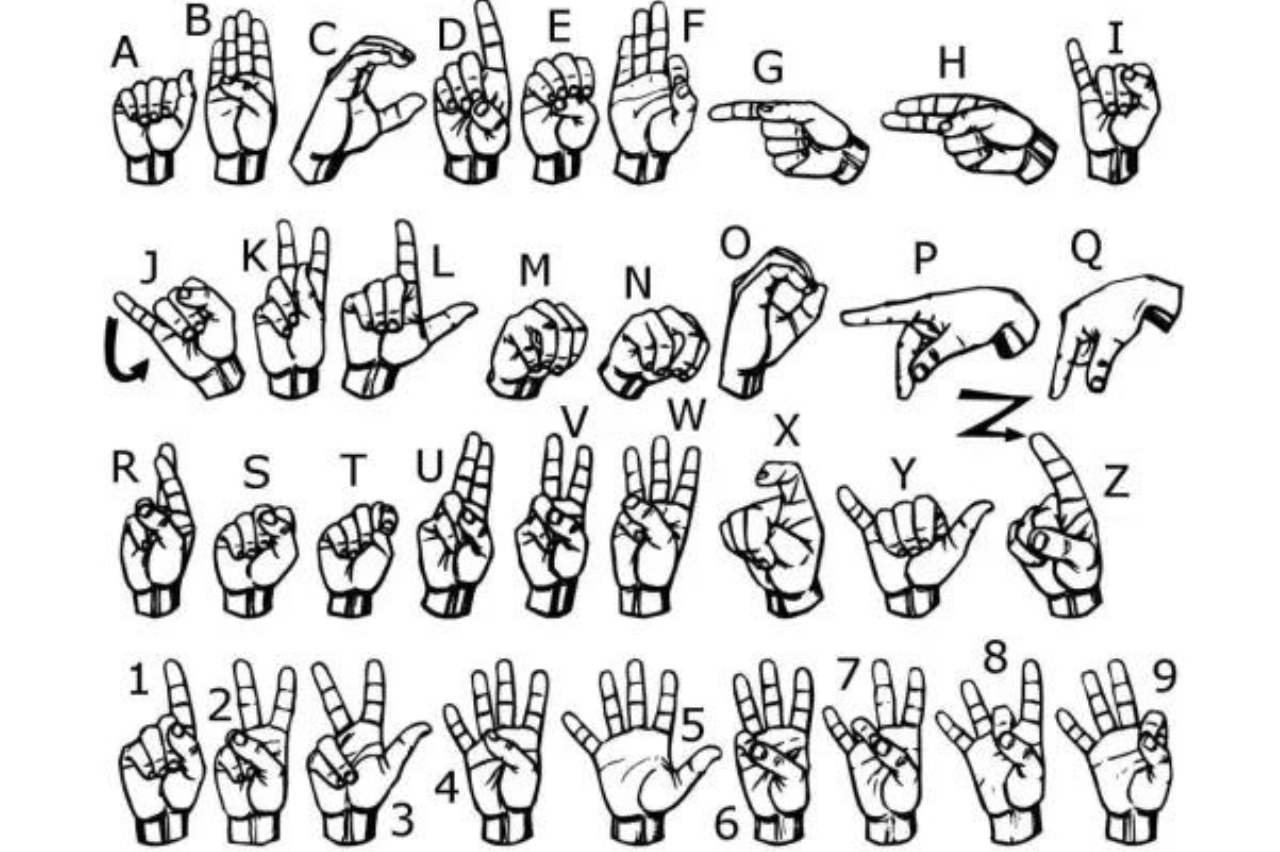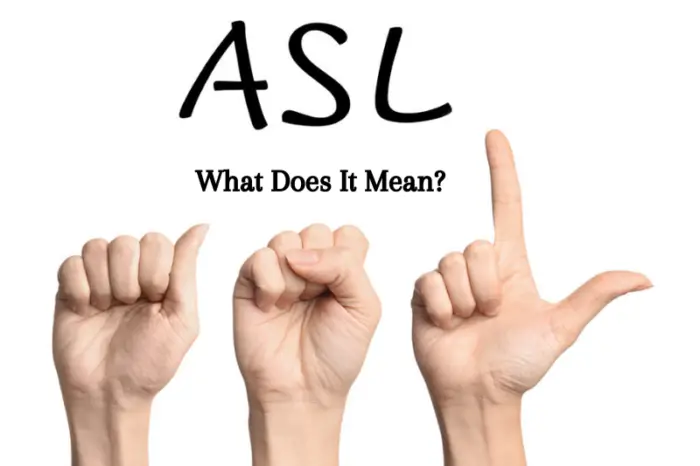Have you ever seen someone making hand gestures and wondered what they were trying to say? They might have been communicating using American Sign Language, or ASL for short. ASL is a unique and fascinating language that combines hand gestures, facial expressions, and body language to convey meaning. And in this blog post, we will explore what does ASL mean, where it came from, and why it’s so important to the deaf and hard-of-hearing community.
What Does ASL Mean?
ASL is just what it sounds like, American Sign Language—no hidden meanings or secret codes there. But despite having the same name, many variations of ASL exist throughout the United States and Canada. Like spoken languages have regional dialects and accents, sign languages also have unique variations. Some experts estimate that as many as 25-30 different sign languages are used worldwide today.
Origin of ASL
Before the birth of ASL, sign language had already been used by various communities in the United States. And even before ASL was officially recognized, hearing families with deaf children would often use ad hoc home signs that were way more advanced than the gestures used by hearing people in everyday conversation.
In the 19th century, a “triangle” of village sign languages developed in New England, with one in Martha’s Vineyard, Massachusetts, another in Henniker, New Hampshire, and one more in Sandy River Valley, Maine. But ASL, as we know it today, is thought to have originated from the American School for the Deaf (ASD), which was founded by Thomas Hopkins Gallaudet in Hartford, Connecticut, way back in 1817.
Now, the road to ASL’s recognition and legitimacy was long. It wasn’t until linguist William Stokoe arrived at Gallaudet University in 1955 and argued for manualism, or the use of sign language in deaf education, that ASL was finally recognized as a legitimate language. And with the help of the Civil Rights Movement of the 1960s, ASL and the Deaf community began to gain more recognition and support. Still, it’s all thanks to the efforts of Deaf advocates and educators, more lenient enforcement of Congress’ mandate, and the use of ASL in religious education and proselytism.
Linguistic features of ASL
Not many know that ASL is a visual language with unique grammar and syntax. It’s more than just a direct translation of English. ASL also has its own grammatical rules, such as using body positioning and facial expressions to indicate tense and sentence structure.
And just like spoken languages have phonemes, ASL has its own set of parameters that distinguish meaning. These parameters include handshape, movement, palm orientation, location, and non-manual markers.
But it’s not just the grammar that sets ASL apart. This beautiful language is also rich in metaphors and symbolism. Signers often use space and movement to depict objects and actions, creating vivid and dynamic visual images that really bring the language to life.
Phonology

ASL is a unique and fascinating language that differs from spoken languages in many ways. Instead of using sounds and words, it uses signs and gestures to convey meaning. Each sign is made up of different components called parameters. These parameters work together to create a complex and expressive language that can convey meaning as any spoken language.
Non-manual signals in ASL add a whole new level of expression to the language, including movements of the eyebrows, cheeks, nose, head, torso, and eyes. It’s impressive to see how many different ways ASL can communicate and convey ideas.
Widespread usage of ASL
ASL isn’t just limited to the United States and Canada; it’s actually used in many different countries all over the world. In fact, ASL-based sign languages are used in countries throughout West Africa, such as Nigeria, Ghana, and Togo. People there consider these sign languages to be the official ones of their countries.
But that’s not all. While many sign languages are used in Europe, ASL is the dominant one in Anglo-America. ASL is also used as a first language in countries like Bolivia, Cambodia, and Zimbabwe and even as a lingua franca in the global Deaf community. It’s genuinely incredible how far-reaching ASL has become.
It’s still an open question how similar the ASL-based sign languages in West Africa are to the variety used in America. Still, it’s exciting to think about cross-cultural communication and exchange possibilities. No matter where ASL is used, it’s a powerful tool for Deaf individuals to communicate and connect.
Variations
As mentioned earlier, ASL isn’t just one static language. Nope, there are actually different varieties of ASL found all over the world. One unique variety of ASL is Black ASL, which evolved because of segregated schools in certain states, including residential schools for deaf students. This version of ASL has its distinct vocabulary, phonology, and even some grammatical structure.
Also, Bolivian Sign Language is considered a dialect of ASL. It’s no more divergent than other acknowledged dialects, but Malaysian Sign Language, which has ASL origins, is no longer mutually comprehensible with ASL and is considered its language.
When communicating with hearing English speakers, ASL speakers might use Pidgin Signed English (PSE) or ‘contact signing,’ which blends English structure with ASL vocabulary. However, remember that Manually Coded English (MCE) is not considered a variety of ASL. It’s a constructed sign language that matches English grammar and replaces spoken words with signs.
Benefits of learning ASL
Here are some benefits of learning ASL that will surely make you want to start learning this fascinating language:
Improved communication
One of the most obvious benefits of learning ASL is that it allows you to communicate more effectively with members of the deaf community. This can be especially important if you have deaf friends, family members, or colleagues, as it can make it easier for you to connect with them on a deeper level.
Additionally, knowing ASL can improve your communication skills, as it can help you become more aware of nonverbal communication cues and develop your ability to convey messages clearly and concisely.
Increased career opportunities
Learning ASL can also open up new career opportunities, as there is a growing demand for professionals who are proficient in sign language. For example, you could become an interpreter for deaf people, work in a school or university setting, or even teach ASL to others. Moreover, having ASL on your resume can set you apart from other job applicants and make you a desirable candidate for certain positions.
Enhanced cognitive abilities
Another surprising benefit of learning ASL is that it enhances your cognitive abilities. Research has shown that learning a second language can improve memory and problem-solving skills and even increase gray matter in the brain. Furthermore, learning a visual-spatial language like ASL can also improve your spatial reasoning skills, which can be helpful in fields such as mathematics, science, and engineering.
Greater understanding and appreciation for deaf culture
When you learn ASL, you also gain a greater understanding and appreciation for deaf culture. By understanding the unique perspectives and experiences of deaf individuals, you can become a more empathetic and inclusive member of society. Additionally, learning ASL can help break down barriers between hearing and deaf communities and promote greater social integration and acceptance.
Fun and fulfilling hobby
Learning ASL can be a fun and fulfilling hobby. ASL is a unique and expressive language that can be a joy to learn and use. Moreover, being able to communicate with deaf individuals can open up new social and cultural experiences, as well as help you forge new friendships and connections. So, if you’re looking for a new hobby that is both rewarding and enjoyable, learning ASL is worth considering.
Conclusion
ASL is a dynamic and complex language that is essential for Deaf communities around the world. Learning ASL not only enables you to communicate with Deaf people but also opens up a new way of thinking about language and communication. It allows you to connect with a vibrant and diverse community and opens doors to new personal and professional growth opportunities. By learning ASL, you can gain a deeper understanding of Deaf culture and history and become more empathetic and compassionate.


